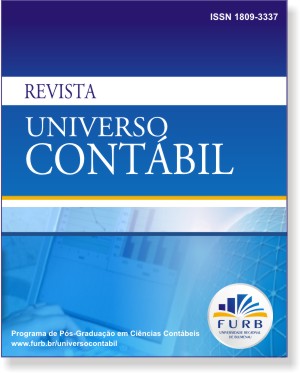THE USE OF CURRENT COST (FAIR VALUE) IN THE EVALUATION OF ASSETS IN INFORMATION TECHNOLOGY COMPANIES
DOI:
https://doi.org/10.4270/ruc.20117Keywords:
Current cost. Assets evaluation. Management accounting.Abstract
In a context of convergence to international accounting standards, the Current Cost (Fair Value) gains strength as a method of assets evaluation and restarts the discussion on its implementation feasibility in terms of objectivity and practicality. Thus, the goal of this study was to verify the impact of using such methodology in Information Technology (IT) companies. To this end, it was promoted a brief review of the theory about the evaluation of assets at entry prices and methodological procedures were developed so as to identify and classify the assets’ main items of the three companies which participated in the multi-case study, being them evaluated based on the historical costs and on current prices of items replacement under the same conditions that were found, whenever indentified in a corresponding secondary market. The procedures allowed the evaluation of approximately 50% of the number of fixed assets’ items, representing approximately 75% of the total value of the pool. After the adjustment based on the current cost, it was found an average increase in the equity of the three companies of 36%, having standard deviation of 13%. This change is significant and relevant to the internal user in the management decisions, and to the external user in the investment or granting credit decisions. The procedure performed ensured an increase in informational capacity without the abandonment of objective criteria for evaluation.Downloads
Published
2011-09-24
How to Cite
Dameda, A. das N., Alves, T. W., & Ott, E. (2011). THE USE OF CURRENT COST (FAIR VALUE) IN THE EVALUATION OF ASSETS IN INFORMATION TECHNOLOGY COMPANIES. Revista Universo Contábil, 7(3), 25–40. https://doi.org/10.4270/ruc.20117
Issue
Section
National Section
License
The copyright for papers published in this journal belong to the author, with rights of first publication for the journal. As the papers appears in this publicly accessed journal, the papers are for free use, receiving their credit, in educational and non-commercial uses. The journal will allow the use of the papers published for non-commercial purposes, including the right to send the paper to publicly accessed databases.


